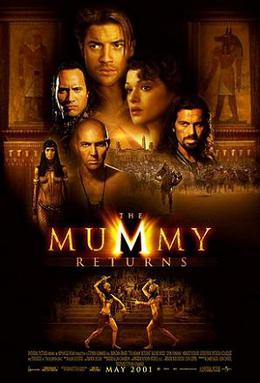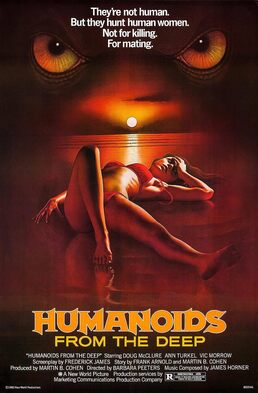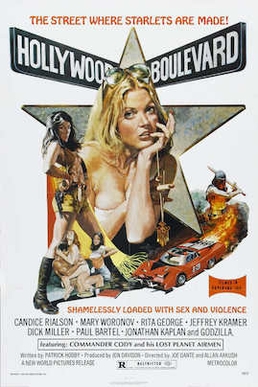
Galaxy Quest is a 1999 American science fiction comedy film directed by Dean Parisot and written by David Howard and Robert Gordon. A parody of and homage to science-fiction films and series, especially Star Trek and its fandom, the film depicts the cast of a fictional cult television series, Galaxy Quest, who are drawn into a real interstellar conflict by actual aliens who think the series is an accurate documentary. It stars Tim Allen, Sigourney Weaver, Alan Rickman, Tony Shalhoub, Sam Rockwell, and Daryl Mitchell. The film was a modest box office success and positively received by critics: It won the Hugo Award for Best Dramatic Presentation and the Nebula Award for Best Script. It was also nominated for 10 Saturn Awards, including Best Science Fiction Film and Best Director for Parisot, Best Actress for Weaver, and Best Supporting Actor for Rickman, with Allen winning Best Actor.

The Abyss is a 1989 American science fiction film written and directed by James Cameron and starring Ed Harris, Mary Elizabeth Mastrantonio, and Michael Biehn. When an American submarine sinks in the Caribbean, a US search and recovery team works with an oil platform crew, racing against Soviet vessels to recover the boat. Deep in the ocean, they encounter something unexpected.

Forbidden Planet is a 1956 American science fiction film from Metro-Goldwyn-Mayer, produced by Nicholas Nayfack, and directed by Fred M. Wilcox from a script by Cyril Hume that was based on an original film story by Allen Adler and Irving Block. It stars Walter Pidgeon, Anne Francis, and Leslie Nielsen. Shot in Eastmancolor and CinemaScope, it is considered one of the great science fiction films of the 1950s, a precursor of contemporary science fiction cinema. The characters and isolated setting have been compared to those in William Shakespeare's The Tempest, and the plot contains certain happenings analogous to the play, leading many to consider it a loose adaptation.

Roger William Corman is an American film director, producer, and actor. Known under various monikers such as "The Pope of Pop Cinema", "The Spiritual Godfather of the New Hollywood", and "The King of Cult", he is known as a trailblazer in the world of independent film. Many of Corman's films are low-budget cult films including some which are adapted from the tales of Edgar Allan Poe.

Tentacle erotica is a type of pornography most commonly found in Japan that integrates traditional pornography with elements of bestiality, fantasy, horror, and science fiction. It is found in some horror or hentai titles, with tentacled creatures having sexual intercourse, predominantly with females or, to a lesser extent, males. Tentacle erotica can be consensual but mostly contains elements of rape.

The Mummy Returns is a 2001 American adventure horror comedy film written and directed by Stephen Sommers, starring Brendan Fraser, Rachel Weisz, John Hannah, Arnold Vosloo, Oded Fehr, Patricia Velásquez, Freddie Boath, Alun Armstrong, and Dwayne Johnson in his film acting debut. The film is a sequel to the 1999 film The Mummy and was distributed by Universal Pictures.

Battle Beyond the Stars is a 1980 American space opera film produced by Roger Corman, directed by Jimmy T. Murakami, and starring Richard Thomas, Robert Vaughn, George Peppard, John Saxon, Sybil Danning and Darlanne Fluegel. Intended as a futuristic "Magnificent Seven in outer space", the screenplay was written by John Sayles with the score by James Horner and special effects designed by filmmaker James Cameron. The film was theatrically released by Corman's New World Pictures and was a moderate box office success, despite receiving mixed reviews from critics.
Carnival of Monsters is the second serial of the tenth season of the British science fiction television series Doctor Who, which was first broadcast in four weekly parts on BBC1 from 27 January to 17 February 1973.

TerrorVision is a 1986 American science fiction horror comedy film directed by Ted Nicolaou, produced and written by Albert and Charles Band and composed by Richard Band, all of whom would go on to found and work with Full Moon Features in 1989. TerrorVision was made by Empire International Pictures, the production company owned by Charles Band prior to Full Moon, and was released in February 1986.

Forbidden World, originally titled Mutant, is a 1982 American science fiction-horror film. The screenplay was written by Tim Curnen, from a screenstory by R.J. Robertson and Jim Wynorski. It was co-edited and directed by Allan Holzman, who had edited Battle Beyond the Stars two years earlier. The cast includes Jesse Vint, Dawn Dunlap, June Chadwick, Linden Chiles, Fox Harris and Michael Bowen. Forbidden World has also been released under the titles Mutant and Subject 20.

Humanoids from the Deep is a 1980 American science fiction horror film starring Doug McClure, Ann Turkel, and Vic Morrow. Roger Corman served as the film's uncredited executive producer, and his company, New World Pictures, distributed it. Humanoids from the Deep was directed by Barbara Peeters and an uncredited Jimmy T. Murakami.

Planet of the Vampires is a 1965 science fiction horror film produced by Fulvio Lucisano, directed by Mario Bava, that stars Barry Sullivan and Norma Bengell. The screenplay, by Bava, Alberto Bevilacqua, Callisto Cosulich, Antonio Roman and Rafael J. Salvia, was based on an Italian-language science fiction short story, Renato Pestriniero's "One Night of 21 Hours". American International Pictures released the film as the supporting film on a double feature with Daniel Haller's Die, Monster, Die! (1965).

Big Bad Mama is a 1974 American action-crime-sexploitation comedy movie produced by Roger Corman, starring Angie Dickinson, William Shatner, and Tom Skerritt, with Susan Sennett and Robbie Lee. This movie is about a mother, Wilma, and her two daughters, Polly and Billie Jean, who go on a crime spree. After the mother unexpectedly falls in love with a bank robber it all ends, with tragic consequences. Big Bad Mama became a cult hit and was followed by a sequel, Big Bad Mama II, in 1987.
Alien is a science fiction horror and action media franchise centered on the original film series which depicts warrant officer Ellen Ripley and her battles with an extraterrestrial lifeform, commonly referred to as the Alien ("Xenomorph"), and the prequel series following the exploits of the David 8 android and the creators of the eponymous creatures referred to as the "Engineers".

Hollywood Boulevard is a 1976 American satirical exploitation film directed by Allan Arkush and Joe Dante, and starring Candice Rialson, Paul Bartel, and Mary Woronov. It follows an aspiring actress who has just arrived in Los Angeles, only to be hired by a reckless B movie film studio where she bears witness to a series of gruesome and fatal on-set accidents. The film blends elements of the comedy, thriller, and slasher film genres.

Space Raiders, also known as Star Child, is a 1983 space Western film written and directed by Howard R. Cohen and produced by Roger Corman. The film was made during the time when many studios were releasing space opera films following the success of Star Wars. However, the film was panned by critics, especially for its reuse of special effects footage and music taken from Corman's 1980 film Battle Beyond the Stars.

Monsters vs. Aliens is a 2009 American animated science fiction action comedy film produced by DreamWorks Animation and distributed by Paramount Pictures. The film was directed by Conrad Vernon and Rob Letterman from a screenplay written by Letterman, Maya Forbes, Wallace Wolodarsky, and the writing team of Jonathan Aibel and Glenn Berger. Featuring the voices of Reese Witherspoon, Seth Rogen, Hugh Laurie, Will Arnett, Kiefer Sutherland, Rainn Wilson, Paul Rudd, and Stephen Colbert, the film involves a group of misfit monsters hired by the United States Armed Forces to stop the invasion of an extraterrestrial villain and save the world in exchange for freedom.
Taaffe O'Connell is an American actress and publisher, best known by her fans for her performance in cult-classic sci-fi horror film Galaxy of Terror. Her acting career began in the late 1970s and continued uninterrupted through the 1980s. Her career has seen a rebirth after 2000 and has continued to the present day.

Alien is a 1979 science fiction horror film directed by Ridley Scott and written by Dan O'Bannon. Based on a story by O'Bannon and Ronald Shusett, it follows the crew of the commercial space tug Nostromo, who, after coming across a mysterious derelict spaceship on an uncharted planetoid, find themselves up against a deadly and aggressive extraterrestrial loose within their vessel. The film stars Tom Skerritt, Sigourney Weaver, Veronica Cartwright, Harry Dean Stanton, John Hurt, Ian Holm, and Yaphet Kotto. It was produced by Gordon Carroll, David Giler, and Walter Hill through their company Brandywine Productions and was distributed by 20th Century-Fox. Giler and Hill revised and made additions to the script; Shusett was the executive producer. The Alien and its accompanying artifacts were designed by the Swiss artist H. R. Giger, while concept artists Ron Cobb and Chris Foss designed the more human settings.
Austin McKinney is an American cinematographer and film editor.
















